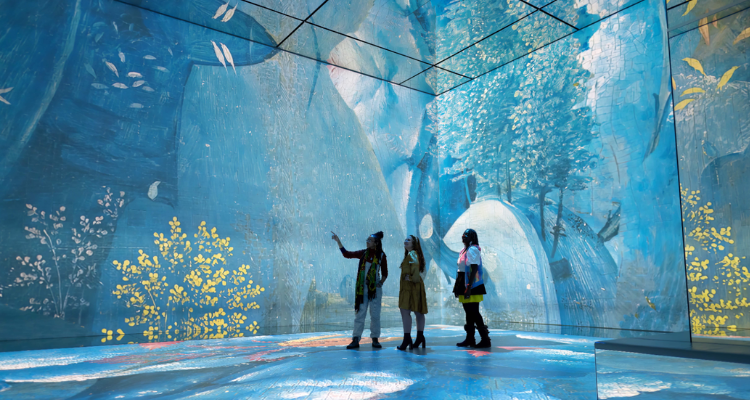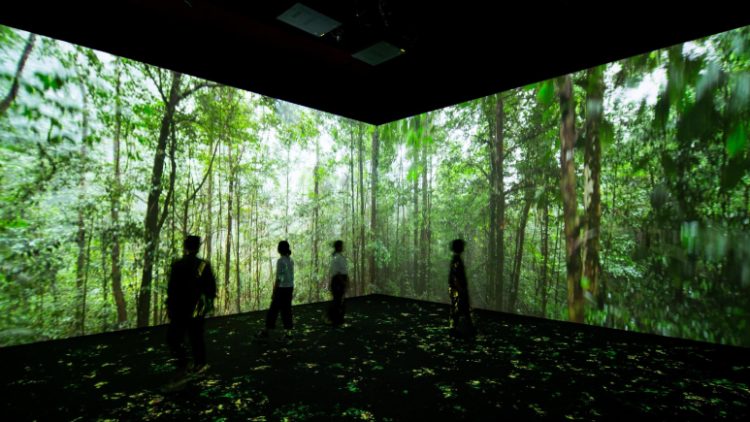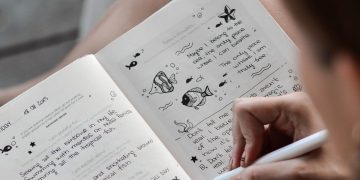Prologue: Stepping into a Different Kind of Museum
It was a rainy autumn afternoon when Mira, a university student in a small European city, opened her laptop and logged in to a virtual exhibition platform. The drizzle against her window contrasted with the warm glow of her screen. Within seconds, the loading bar disappeared, and she found herself standing—virtually—inside the soaring atrium of the “World Heritage Cloud Museum.”
For Mira, as for millions of people around the globe, cloud exhibitions were no longer a novelty. They had become gateways to culture and knowledge, accessible from bedrooms, classrooms, or libraries. Yet what kept her coming back was not merely convenience but the promise of an interactive, narrative-driven experience—something more than scrolling through pictures online.
This is her story—a journey that reflects not only the evolution of cloud exhibitions but also the ways they transform our understanding of heritage, art, and human connection.
Chapter 1: First Steps—The Invitation of the Interface
Mira’s first impression was shaped by the platform’s intuitive design. A 3D map floated before her, offering pathways to different thematic wings: “Ancient Civilizations,” “Renaissance Wonders,” “Art and Technology,” and “The Future of Museums.”
Unlike static websites, the platform provided a “guided tour” mode—a narrative voice welcoming her, with subtle background music evoking a sense of arrival. There was even a real-time visitor count, showing avatars of other users moving around the space.
“A museum is not just a collection of artifacts,” the narrator said, “but a living conversation across time. Let us begin.”
From the very start, Mira felt invited into a story, not merely consuming content. This highlights a key principle of modern cloud exhibitions: designing user journeys with emotional arcs.
Chapter 2: Ancient Echoes—A Walk in Virtual Mesopotamia
Choosing the “Ancient Civilizations” wing, Mira’s avatar entered a hall lined with monumental reliefs and clay tablets. The lighting shifted subtly to recreate the warm glow of oil lamps. As she approached a statue, a floating icon suggested “Tap to Animate.”
She tapped, and the static sculpture transformed into a short holographic scene: a priest in a temple courtyard making offerings to the gods. A side panel displayed an annotated translation of the inscriptions.
Here the exhibition was not simply digitizing objects but reanimating the past, offering context that physical artifacts often fail to convey. Mira lingered at a reconstructed ziggurat, where she could switch between archaeological layers to understand how the structure evolved over centuries.
The experience underscored an important point: cloud exhibitions can merge scholarly research with narrative imagination, providing insights without compromising academic rigor.
Chapter 3: Meeting Others—The Social Layer
As she explored further, Mira noticed a small icon flashing in the corner—an invitation to join a live discussion circle. Curious, she clicked.
Instantly, her screen opened a window showing a dozen other visitors from around the world: a retiree from Brazil, a teacher in Kenya, a high school student in Japan. Their avatars were seated in a semicircle facing a virtual curator.
The curator spoke about the influence of Mesopotamian astronomy on later civilizations, showing celestial diagrams projected in the virtual space. Participants asked questions, some typing in the chat box, others speaking through their microphones.
Mira realized that social interaction is not just an add-on but a core feature of cloud exhibitions, turning passive viewing into shared learning. It was this dimension—the sense of presence and exchange—that distinguished today’s cloud experiences from early digital catalogs.
Chapter 4: Renaissance in the Cloud—Art That Breathes
The next day, Mira returned to visit the “Renaissance Wonders” wing. This section demonstrated how cloud exhibitions could transcend physical limitations.
She approached a virtual version of Michelangelo’s David. A slider allowed her to zoom in to microscopic details of the marble’s texture, revealing chisel marks invisible to the naked eye. Another tool displayed light simulations, showing how the statue appeared under torches, candlelight, and modern gallery lighting.
Most striking was the immersive story mode. When activated, Mira found herself in a bustling Florentine workshop of the early 1500s, surrounded by apprentices grinding pigments and sculptors carving stone. A voice-over narrated the political and cultural upheavals of the period, helping her understand how art was not just beauty but also power and ideology.
Such narrative immersion illustrates that interactive storytelling can humanize historical artifacts, making them resonate with contemporary audiences who might otherwise see them as remote and static.
Chapter 5: Beyond Viewing—Participatory Creation
Cloud exhibitions are no longer confined to presenting heritage. They also invite participation and co-creation.
In the “Art and Technology” wing, Mira discovered a collaborative installation where visitors could design their own virtual tapestries using AI-assisted tools. Each user’s contribution became a tile in a gigantic evolving mosaic displayed in real time.
She noticed messages from other participants: greetings in multiple languages, emojis, short poems. The exhibition became a living artwork, illustrating how digital platforms blur the line between viewer and creator.
Such participatory models signal a profound shift in cultural consumption: from one-way transmission to co-creative engagement.

Chapter 6: The Power of Interaction—Educational Dimensions
Later that week, Mira joined a live workshop designed for students. It involved a gamified archaeology simulation where participants unearthed virtual artifacts from a simulated dig site.
Each find triggered mini-lessons on dating techniques, material analysis, and cultural context. Teams competed to reconstruct fragmented objects fastest, fostering both collaborative problem-solving and curiosity-driven learning.
Research suggests that such interactive educational modules in cloud exhibitions significantly enhance knowledge retention compared to traditional reading or passive video watching. For Mira, the lesson was not just about artifacts but about how interactivity fuels deep learning.
Chapter 7: Emotional Resonance—The Memorial Wing
Not all experiences in cloud exhibitions are playful or celebratory. Some are deeply moving.
The platform hosted a virtual Memorial Wing dedicated to the history of forced migrations. Mira entered a subdued, monochrome environment where soft soundscapes of ocean waves and footsteps played. Photographs and personal testimonies appeared as she moved forward.
At one point, her avatar paused before a projected letter from a refugee child. A prompt invited her to record a short audio reflection. She spoke quietly into her microphone, aware that her words would be stored as part of the exhibition’s growing collective memory.
This experience revealed another strength of cloud exhibitions: their ability to foster empathy and reflection, connecting distant lives through intimate narratives.
Chapter 8: Behind the Scenes—Technology and Curatorial Vision
Curious about how such seamless experiences were created, Mira attended a webinar hosted by the platform’s design team.
She learned that the system integrated cloud rendering, real-time motion capture, AI-based translation, and modular storytelling engines. Curators worked alongside technologists to ensure that scholarly accuracy was not sacrificed for visual appeal.
The webinar emphasized that successful cloud exhibitions depend on interdisciplinary collaboration, where historians, educators, designers, and engineers co-create experiences.
It also revealed the challenges: sustaining server capacity for peak visitor traffic, ensuring accessibility for users with limited bandwidth, and protecting digital assets from piracy.
Chapter 9: Barriers and Gaps—Unfinished Work
While Mira’s journey showcased the promise of cloud exhibitions, it also highlighted persistent gaps.
- Digital Divide: Not all users worldwide can access high-quality cloud experiences due to limited connectivity or lack of devices.
- Authenticity Debate: Some critics argue that virtual experiences can never substitute for the aura of original artifacts.
- Data Privacy and Ethics: Platforms collecting user-generated content must navigate consent and archival responsibility.
- Cultural Sensitivity: Global exhibitions must handle diverse traditions respectfully, avoiding homogenization or unintended offense.
These challenges remind us that cloud exhibitions are not neutral technologies but cultural infrastructures shaped by human choices.
Chapter 10: Imagining the Future—Beyond the Horizon
As she closed the platform at the end of her week-long exploration, Mira reflected on how much the experience had reshaped her perception of museums.
She imagined future possibilities:
- Haptic Feedback: Gloves or wearable devices might allow users to feel the texture of sculptures or fabrics.
- AI Curators: Personalized guides that learn each visitor’s interests and suggest thematic pathways.
- Decentralized Cultural Commons: Shared virtual repositories where institutions collaborate rather than compete.
- Mixed-Reality Festivals: Seamless events blending physical gatherings with cloud-based participation.
- Lifelong Learning Ecosystems: Cloud exhibitions integrated into schools, universities, and community programs.
The horizon seemed limitless—not because technology could do everything, but because it could help people connect more meaningfully with their shared cultural heritage.
Epilogue: A Different Kind of Homecoming
When Mira later visited a local museum in her own city, she found herself appreciating physical objects in a new way. The tactile presence of an ancient ceramic pot felt richer because she now understood its context through digital journeys she had taken.
Cloud exhibitions had not replaced traditional museums for her; they had expanded the meaning of cultural participation, offering stories, connections, and voices that might otherwise have remained inaccessible.
The future of exhibitions, she thought, would not be a contest between the digital and the physical but a partnership of realms—an expanded cultural home where everyone, anywhere, could belong.

















































